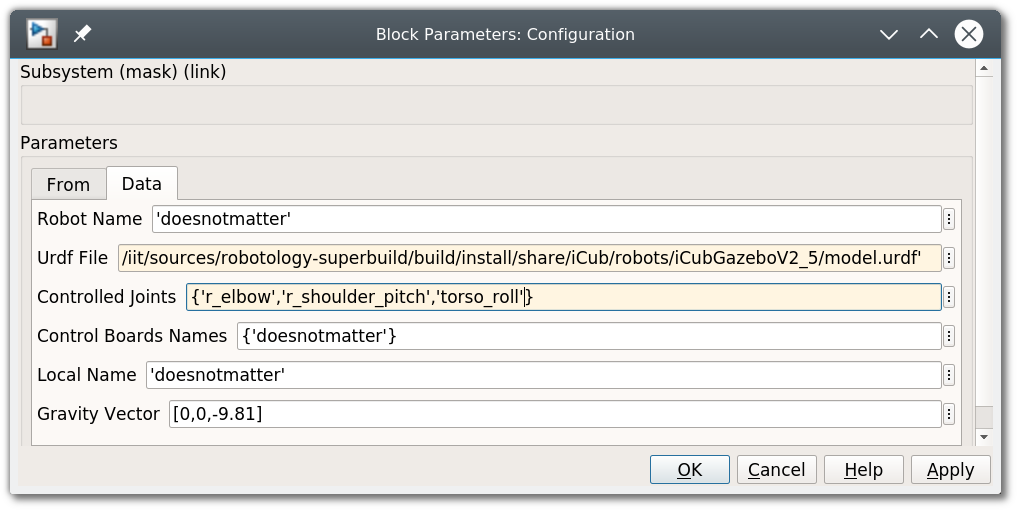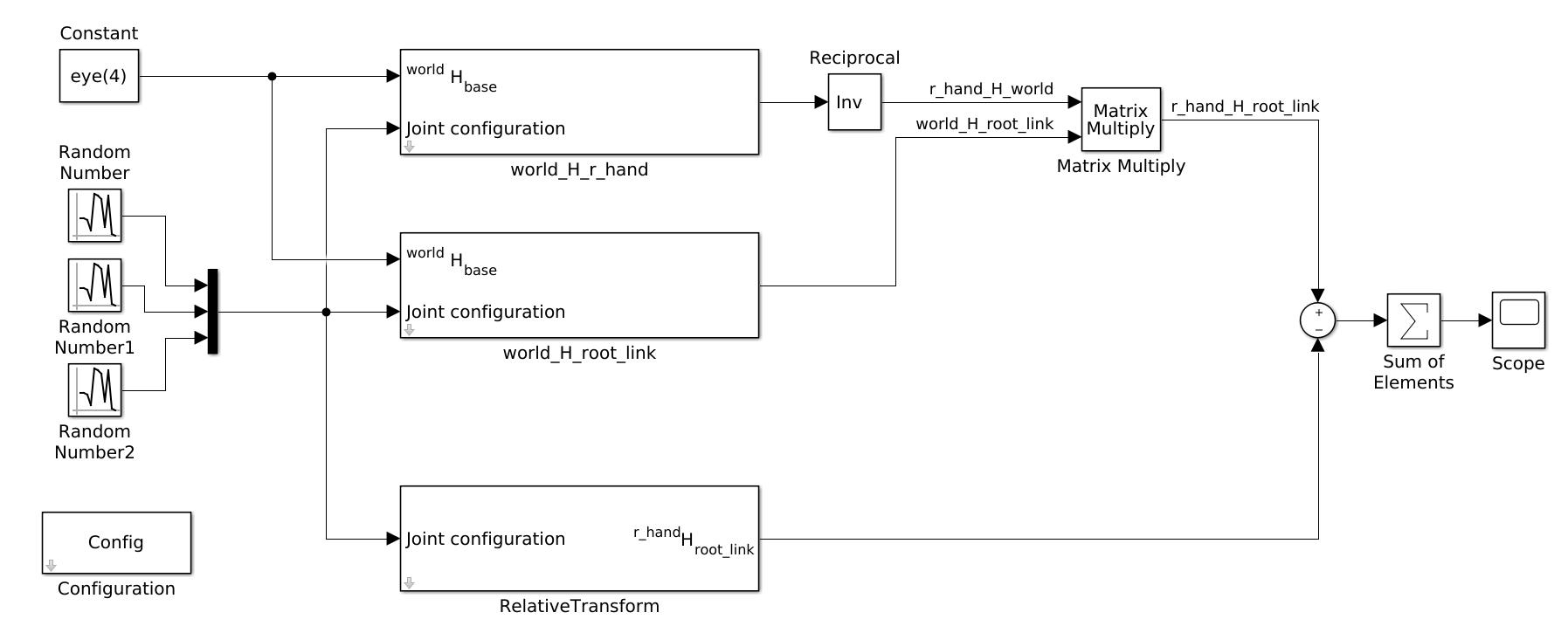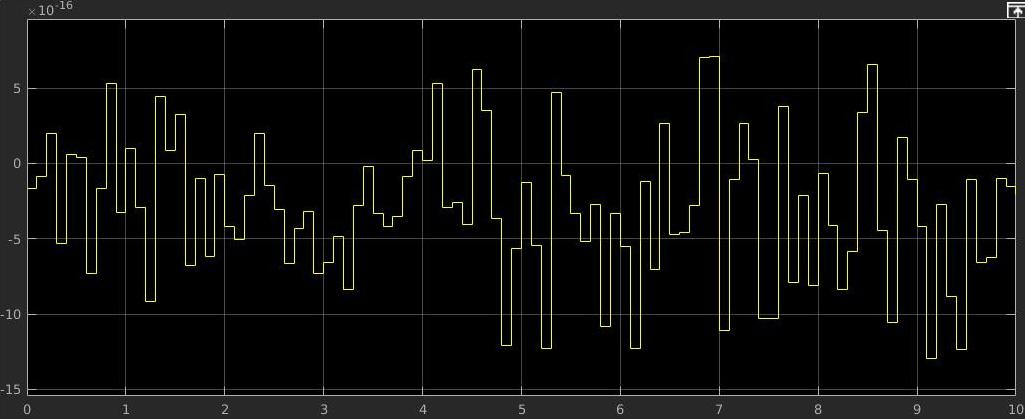Using model blocks¶
Example
You can find the Simulink model created in this tutorial in the examples/ folder
Explore the urdf model¶
In this tutorial we will use blocks that expose iDynTree functionalities to compute canonical rigid-body dynamics quantities. We will use the robot description of the humanoid iCub stored in icub-models.
If your system is properly configured, iDynTree commands should be available in your path. First, locate the model.urdf file in your filesystem.
Tip
You should find it in <build>/install/share/iCub/robots/iCubGazeboV2_5/model.urdf, where <build> is the build folder of the superbuild repository.
You should be able to execute the following command, that prints a recap of the urdf model listing joints, links, and frames:
idyntree-model-info -p -m /absolute/path/to/model.urdf
We are going to develop a Simulink model that computes in two ways the relative transform between root_link and r_hand.
Configuration block¶
Create a blank Simulink model and configure the solver to use a fixed-step as explained in the previous tutorial.
The model is configured through a Configuration block. Select Mask as configuration source, and fill the Data tab as follows:

The only important sections are the Urdf File containing the absolute path of the file model.urdf and the Controlled Joints that list the degrees of freedom of the robot we want to control. In this case we can operate on the joint angles of the three listed joints.
There are other entries in this Configuration block, but they go beyond the scope of this tutorial since they are required to interface with a YARP robot in order to get measurement and set references.
Note
We used the absolute path to the urdf file to simplify the tutorial. On a typical system we use the filesystem resources provided by YARP to locate files, that allows us to store only the file name.
iDynTree blocks¶
Then, using the Relative Transform and Forward Kinematics block try to obtain the following model:

The upper part of this models combines the output of two Forward Kinematics blocks to compute the {}^{r\_hand}H_{root\_link} transform, and compares the output with another block that uses the same model and directly provides the same transform. Three blocks generating random numbers define during every simulation loop a new joint configuration (associated to the three joints configured in the Configuration block). The two transform are then subtracted element-wise and summed.
Pressing the Play button, the model parses the model stored in the urdf file, configures the joints angles, and provides at every simulation loop the requested transforms. We can visualize the difference of the two noticing the they match almost precisely (excluding small numerical rounding):

Whole-Body Toolbox provides a many rigid-body dynamics resources that can be used to quickly build complex controllers, have a look for instance to Inverse Dynamics, Jacobian, Mass Matrix, and QP.